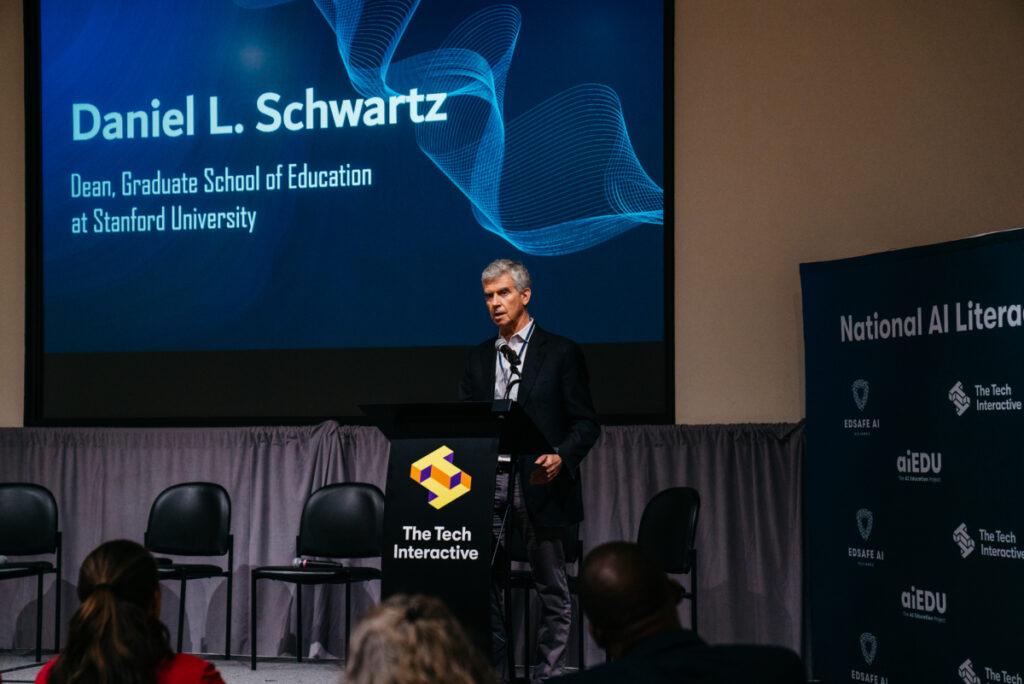Stanford Graduate School of Education Professor Victor R. Lee knows there are lots of exciting things data can do for education, but what’s most exciting for him is discovering what students can do with data.
“Instead of having data science be the tool that figures out what learners are doing…learners figure out what the data science is doing,” he explained in the final session of inaugural Stanford Transforming Learning Accelerator Spring Summit on June 2.
Lee’s Data Interactions and STEM Teaching and Learning Lab empowers learners to take control of the data they produce themselves as part of the “quantified self movement,” or the trend toward tracking our own behaviors and health metrics via wearable devices and smartphones.
Students have used data to compare health tracking apps, measure the length of their playground in steps, track their movement activity for a week, and determine if walking uphill required more steps than walking downhill.
“I found time and again that students… can come up with some pretty interesting things to investigate and they get much more comfortable with thinking about and through data along the way,” Lee said.
Meanwhile, computer science Professor Emma Brunskill creates artificial intelligence systems that can “learn” from the past to help make better decisions for the future.
Read more from the Summit Inaugural Transforming Learning Accelerator Spring Summit highlights innovative research into how people learn Stanford neuroscientists and education scholars work together on interventions to improve learning Using technology to improve human performance and relationships
Because it would be impossible to scientifically test every learning method for every type of learner, Brunskill’s systems use machine learning to analyze data to come up with personalized education paths for individuals.
For instance, Brunskill’s team had students play a game to learn about fractions; then, after analyzing data about their past performance, the system was able to design a game sequence that allowed the students to stay engaged for up to 30 percent longer.
“Those sorts of interventions could really lead to transformational impacts in the efficiency and engagement and effectiveness of learning,” she said.
In response to questions from participants throughout the summit, the Stanford researchers emphasized that the increased use of data and technology doesn’t mean teachers or traditional teaching methods are any less important.
“It’s really just trying to work smarter instead of harder,” Brunskill said.
Carla Pugh, professor of surgery at Stanford Medicine, echoed that sentiment earlier in the day during her panel on technology and education.
“I don’t think this data that we’re outputting eliminates the teacher in any way whatsoever,” she said. “It changes the role in some instances, just in terms of time spent. The technology gives you a diagnosis. The teacher can say, ‘Here are a few things you can do,” and then demonstrate that.’”


